Slavonian Truffle to Round off the Region's Gastro Offer
April 23, 2022 - Slavonia is a region in the far east of Croatia, known for its golden plains, kulen, rakija, and truffles... wait. Well, maybe not just yet, but yes, truffles could become another reason to visit and discover this area. Though Istria is considered to be the Croatian queen of truffles, Slavonian forests are, apparently, just as rich with the fancy fungi.
As Glas Slavonije writes, Željko Labaš follows the situation in the forests of the Bizovac region and its surroundings with great love and attention.
Truffles were sought in this area as early as 1777.
"Due to its geographical position, it is understandable that seekers in Istria were the first to find out about the value of truffles, and I would say that they also had good marketing, so they raised their white truffles to the world level and are able to price them from one hundred to several thousand euros per kilogram, depending on quality. However, although the first written trace of truffle hunting in Istria dates back to 1924, Slavonia has a great advantage, because the Austro-Hungarian imperial governor Otto von Tauben mentioned the search for truffles in this area in 1777", Labaš reveals.
According to him, when our ancestors took their pigs to graze in Slavonian forests, they noticed that the pigs with their extraordinary sense of smell, in addition to acorns, would find some "tubers" and eat them with great pleasure. And while there was no particular reaction to this in the area, the Istrians decided to get dogs from Italy to look for truffles and start a big business.
A few years ago, however, there was a change in the research and search for truffles. Istrians kept their brand of white truffles, but enthusiasts in the Pannonian area from the Sutla to the Danube came to their senses and confirmed that Pannonian forests are richer in truffles than Istria, particularly black truffles. Željko Labaš says that Varaždin County has gone the furthest, and at the request of the Novi Marof Tourist Board financed four months of research during which it was determined that there are as many as four species of black truffles in Kalnik and the surrounding forests. During the Boletus Days festival in Paka, there was a demonstration exercise for finding truffles, and these fungi were included in the gastronomic offer especially appreciated by Germans, visitors to local holiday homes. The search began in Petrinja, through the Lonjsko Polje Nature Park, where the Russula mushroom association successfully finds truffles.
Poor man's truffle
"Veterans of the homeland war joined in the truffle search as, they say, there is no better therapy for PTSD - outdoors, active, with your best friend, a dog, enjoying an unsurpassed sense of freedom. I must also mention Matija Josipović, the author of several manuals and a great connoisseur from the area of Kutina - Novska. The truffle connoisseurs closest to us are Hrvoje Knežević from Našice, who works with the Mushroom Association on a beautiful and well-attended exhibition of Slavonian forest mushrooms, and Darko Adamović from Koška, with whom I have worked for years and he has always got beautiful mushrooms, chanterelles and black trumpets. I state this information because, in Europe, these black trumpets are known as the "poor man's truffle", since they have the same effect as the famous Istrian white truffle, which is considered an aphrodisiac", says Labaš.
Unlike Boletus mushrooms, truffles can also be artificially grown on the roots of hazelnuts or hornbeams, which requires a lot of knowledge and patience.
"It took us a whole century to understand the wealth of Slavonia from the Austro-Hungarian Monarchy. All this, thanks to persistent enthusiasts - from top wines, to old cattle species, today we can round off the beauty of Pannonia with the addition of truffles to its gastronomic, tourist, and recreational offer", comments Labaš.
When it comes to ways of finding this prized and expensive delicacy, Labaš prefers specially trained dogs.
"Every hunting dog can be trained to look for truffles, but the Lagotto Romagnolo breed is the most skilled. These dogs have a long history in hunting from the 15th century as the so-called water dogs who used to pull the hunted game out of the water. At one point, someone realised that because of their exceptional sense of smell they could also be used to search for truffles. The price of a Lagotto Romagnolo is acceptable these days, starting from 500 euros. These small, shaggy big-eyed puppies are incredibly lively and adore their owner and families. Their training is a little different from training dogs to search for mines and narcotics. It consists of several phases, and from the beginning, the owner must be with the dog at all times. An introduction follows to the forest, the smell of truffles, and how to act when you find it. Training is the most expensive part, so the price of a well-trained truffle-seeking dog reaches that of a good car" says Labaš, adding that pigs can also be trained to search for truffles because they have a better sense of smell, the disadvantage being that they don't really like sharing the yummy mushroom, and it could be complicated to transport them through forests.
For more, make sure to check out our lifestyle section.
Strukli with Truffles, the Latest Authentic Gourmet Hit in Zagreb County
December 5, 2020 - The secret of one of Zagreb's lesser-known gourmet secrets is slowly getting out, and now there is a new way to try it - strukli with truffles.
One of the most incredible things about Croatia, a land of 4 million people, is the richness and diversity on every level. Every village seemingly has its own dialect words, at least one unique tradition, and often some sort of culinary twist or ingredient which sets it apart form the rest. It is one of the reasons why writing about Croatia is such a fascinating job, for no two days are the same, and there is usually a surprise or three around every corner.
Along with safety and lifestyle, it is one of the jewels of Croatian tourism around which I believe we should build our tourism - the unique authentic experience.
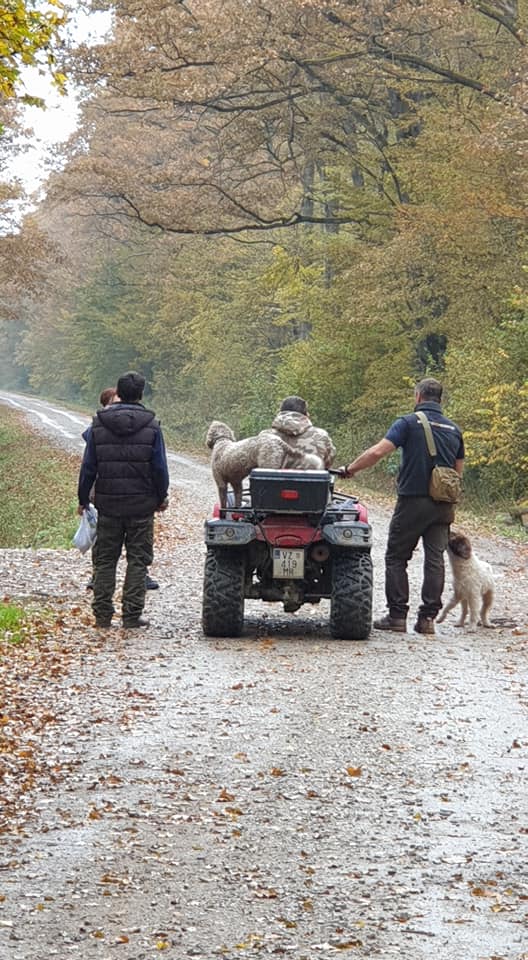
A few weeks ago, for example, I was invited to go truffle hunting near Zagreb Airport in the region of Turopolje. Truffle hunting in Croatia but not in Istria? Just outside Zagreb? I had never heard of such a thing and I was more than a little skeptical. But - and not for the first or last time - I was wrong, and not only can I confirm that the Zagreb truffle industry is alive and well, but also that some of those lovely truffles you are sampling in Istria have their origins in the forests around Zagreb. You can read all about the Zagreb truffle hunting experience in Move Over Istria: the Rise of Zagreb Truffle Hunt Tourism.
But if the truffle hunt was a surprise, so too was the lunch that followed. A Dalmatian restaurant recommended by MIchelin in the heart of Velika Gorica, offering local Turopolje specialities, including black and white Turopolje truffles, including this 135g gem below.
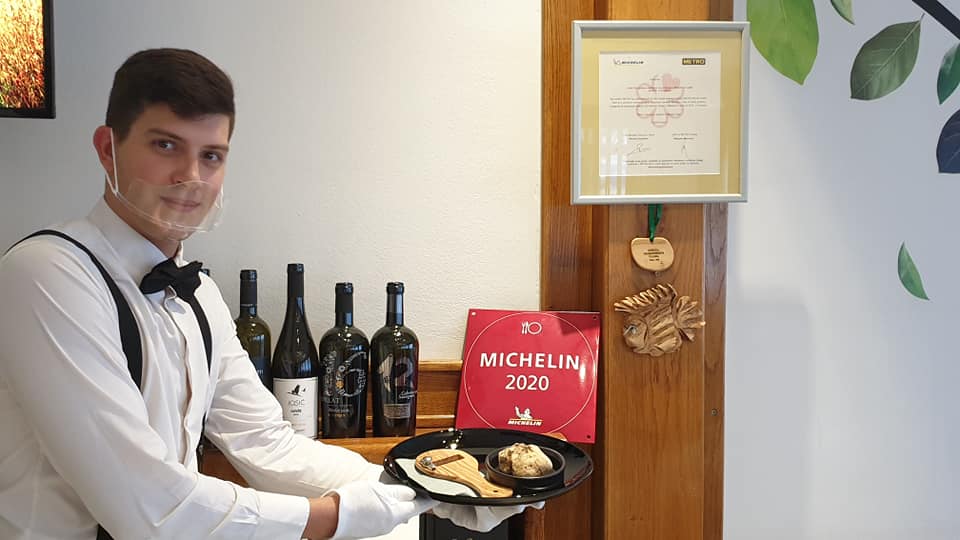
You can read more about the truffle-themed lunch in the article above, but there was one more gourmet addition to a fabulous lunch at Mon Ami restaurant which I only tried later that night when I got home.
Over lunch I was introduced to a very nice young lady called Ivana Belosevic, who ran a bakery called Cipov in the nearby village of Busevec. The name “Cipov” is actually a word used in Turopolje to describe white bread. Cipov was a type of bread only eaten during holidays such as Christmas or Easter. A traditional name for a business which is helping to produce some fabulous authentic Croatian dishes, such as strukli.
But authentic Croatian dishes with a twist.
Such as strukli with truffles.
The conversation at lunch was as good as the excellent food, and I enjoyed listening to Ivana talk with passion about her bakery business, where she has been making homemade strukli now for some 15 years. Another Ivana - Alilovic, Director of the Zagreb County Tourist Board - approached her and asked her what she thought about making strukli with truffles. Zagreb has a great truffle story which is being left untold, and delicious authentic local dishes flavoured with local truffles would be perhaps the best way to promote the story.
And so a new gourmet treasure was born - strukli with truffles.
Strukli is akin to a savoury strudel, with cottage cheese the key ingredient, and one of Croatia's most famous - and popular - dishes. It is best-known in the region of Zagorje, but appears in various formats in other parts of the country. You can see how it is made in the English-language video above. I am not aware of anyone else making strukli with truffles. Ivana's new Facebook page also shows strukli with apricot, and I am sure that a visit to the Cipov family bakery in Bresovec will yield plenty of other culinary delights.
As we previously reported, one of the successful tourism stories in this crazy year was the launch of the Around Zagreb platform, which is a joint effort from the city and county tourist boards of Zagreb. This has helped to considerably widen the scope of tourism possibilities in the capital, in the form of day trip activities just outside the city. In an era of social distancing and outdoor activities, Zagreb County is rich in authenticexperiences - both active and culinary - away from the crowds. and truffle hunting and the sampling of its cuisine fit into this nicely. The pumpkin offer of Ivanic Grad (with its own pumpkin festival), Zumberak trout, and the authentic Samobor quartet of salami, kotlet, mustard and kremsnit, not to mention the local Plesivica wine region, have enough authenticity and unique flavours to entice curious foodies.
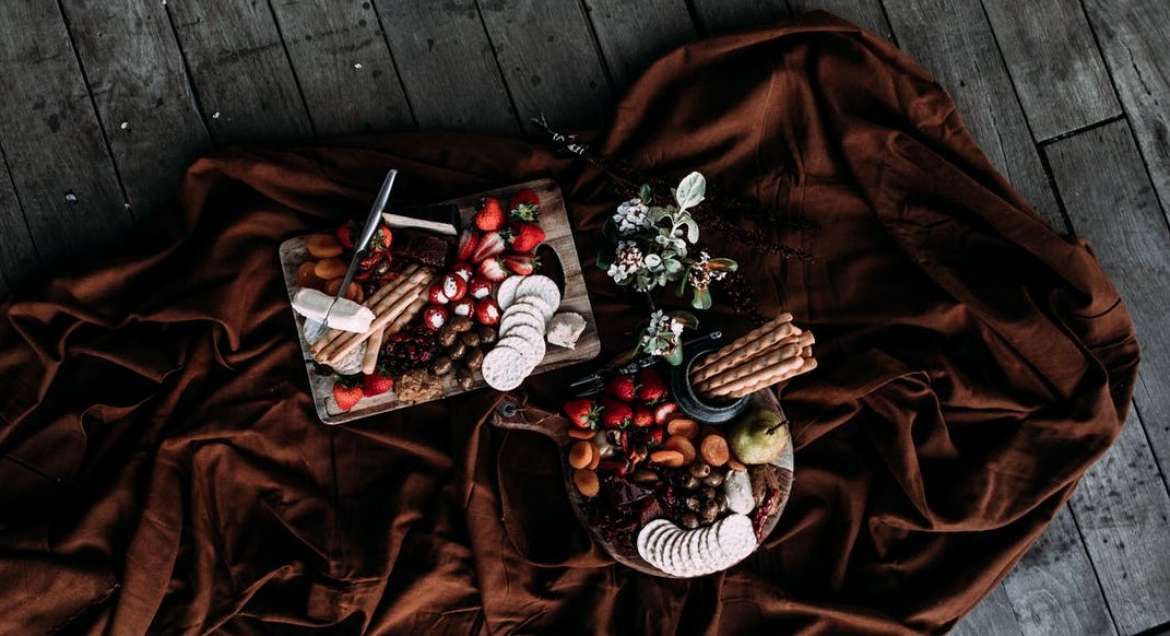
The new strukli with truffles is just one in a number of excellent local authentic product which is made with passion and care by small local family businesses. Individually, they are tiny businesses struggling to survive, especially in this most challenging of years. Collectively, they offer a fascinating web of authentic excellence, which shows the true diversity of Croatia's traditions and heritage. both culinary and otherwise.
In another nice initiative that we reported on recently, the regional tourist board has launched a seasonal campaign to both highlight and promote these businesses.
The local producers are collected in interestingly designed categories that will change in weekly cycles from December 3 to December 24: 1. Relax and reward your body, 2. Decorate your home with Christmas magic, 3. Prepare your holiday table, and 4. Sweet Secrets of Zagreb County.
"In Zagreb County, there are many craftsmen, hardworking people who turn natural resources from their homeland into unique local products," said Ivana Alilović, the director of the Zagreb County Tourist Board. "At the same time, they combine the traditional and the modern. With their creativity, they refresh our heritage and enrich the entire offer of the region. Natural cosmetics and healthy food, medicinal preparations, imaginative decorations and everyday items for the home, irresistible treats etc. Each of these products bears the signature of its origin and its author."
"Production is usually small and limited, but with a high level of quality and personal commitment. Domestic goods that are truly domestic, but also different. We want to raise awareness about the importance of buying from local producers and help all of them in the branding and promotion of products that we can be proud of."
For the latest travel info, bookmark our main travel info article, which is updated daily.
Read the Croatian Travel Update in your language - now available in 24 languages.
Truffle Hunting: Unique Gastro Experience in the Heart of Istria
July 24, 2020 - The Karlić family was the first in Croatia to offer visitors the experience of truffle hunting. We headed out on this unique and above all demanding activity with a truffle hunter and a dog Lila that has been specially trained to search for truffles. In addition to the experience of hunting on the property of the Karlić family, the tour also included tasting specialties with truffles, and owner Ivana prepared them in front of us.
A small number of people in Croatia are engaged in the production of truffle products. The Karlić family is one of the few families in Istria that is more seriously engaged in their production and distribution, but also in hunting. Interestingly, because of local peoples’ tradition, it is said truffle “hunting”, not harvesting.
More dogs than humans
Truffles in Croatia grow mainly in central Istria, and in the rest of the world, they can be found in Italy and small quantities in France, Germany, Austria, and some other countries. They are mostly used by people in Italy and Croatia.
The Karlić family started their story about truffles when their grandfather started researching them 40 years ago. He quickly passed this love on to his wife and daughter, Ivana's mother. It was strange because, at that time, she was supposed to have a "female“ job, not be in the woods with other guys, but she didn't care. Later, she started a family business. Her children Ivan and Ivana also literally grew up in the woods truffle hunting.
At the entrance to a beautifully landscaped yard in the small central Istrian village of Paladini, I and a few other visitors were greeted by Ivana Karlić together with their seven truffle hunting dogs. She explained that there are more dogs than people living in Paladini, located a 40-minute drive from Poreč. There are only about 40 inhabitants, and about 100 dogs because all the people there are engaged in truffle hunting.
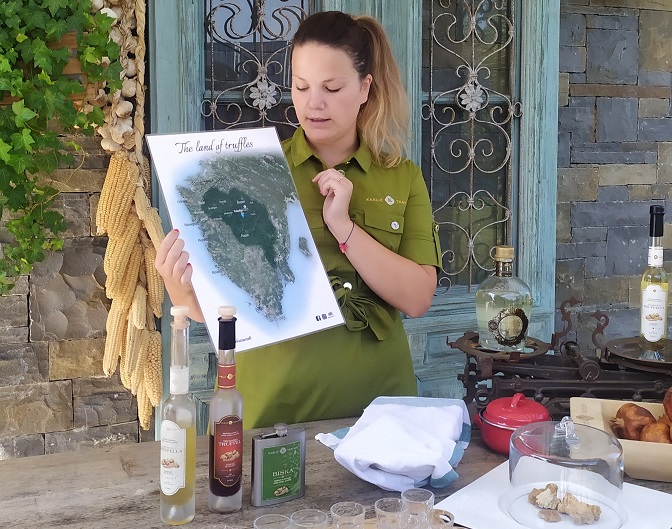
Ivana Karić introduced us to the Istrian tradition of truffle hunting
I was enchanted by the large tasting room for sampling truffles, which perfectly fits in with the nature of central Istria. The panoramic view of the surroundings of Motovun leaves you breathless, as well as the truffle specialties prepared in front of you by Ivana.
Demand for truffles
At the beginning of the truffle hunting tour, Ivana introduced us to the family tradition and we "warmed up“ by tasting homemade truffle rakia – Biska, Teranino, and Medenica.
You can't go truffle hunting in the woods on an empty stomach, so three sequences of dishes followed – slices of sausage and cheese, scrambled eggs, and candied fritters. All the specialties were extremely delicious and filling. That's why it is advised to come hungry. Ivana prepared all the specialties for us in the open kitchen in the tasting room. We could see the whole process of preparing and cooking dishes with truffles. While she was cooking and serving us, Ivana was casually telling the story about truffles and her family.
Truffles and truffle products such as oil, cheese, sausages, rakia, and even chocolate spread can be bought at the shop on the property. Recently they even opened a store in Poreč.
The idea of opening a store came up during self-isolation when they finally had time to think about it, plan it, and realize it. Until now, their products could have only been bought on their property, and their truffles were found in the dishes of many Istrian restaurants, most of which are in Poreč.
"We opted for Poreč because we cooperate with a large number of restaurants here. A lot of people who eat in these restaurants want to buy truffles, but they don't want to come to Paladini only to buy them, so we thought it was a perfect opportunity for guests to buy truffles and take them home,“ says Ivana.
Also, during the lockdown, when they were forced to stay home, and also when the amount of work in tourism was much smaller, they opened an online store to sell their products.
Truffle shop in the Istrian city of Poreč
Training dogs (and people) to truffle hunt
After Ivana fed us well, we went hunting in the woods. Fifteen years ago, the Karlić family launched guided tours with truffle hunting dogs to give tourists a direct insight into how difficult it is to find truffles in the woods. The truffle is, in fact, an underground fungus that grows in symbiosis with trees, at their roots, most commonly oak and hazelnut trees. This makes them extremely difficult to find, so specially trained dogs are needed to search for them.
"Any dog breed can truffle hunt, but the best breed is the Italian Lagotto Romagnolo. They are very obedient and have a good sense of smell. It is easy to train them. Females are much better at truffle hunting because they are focused on truffle hunting all year round, while males are in one part of the year focused on looking for females and are therefore 'distracted',“ explains Ivana.
The Karlić family trains dogs too, as well as organizing courses and exams for future truffle hunters, as people who go truffle hunting are called.
"The training itself lasts one year. We are training them since they are 3 to 4 months old, through the game. We give them truffle treats, we bury truffles, we show them how to dig truffles... The last and most important learning process is the departure of a small puppy with an adult truffle hunting dog to hunt. An adult dog starts digging, gets a reward, a small dog is always jealous of it and then because of his jealousy he will start looking for truffles and get a reward for finding it,“ says Ivana and adds that they only train their dogs.
Karlić family has seven dogs and all of them must be trained every day
Truffle hunters must also pass an exam to know how to behave with dogs in the forest. The license is paid and every year the entrance to the Croatian forests for hunting white truffles must be paid separately.
"We organize exams for truffle hunters in our property. We have about 300 people looking for truffles for us and from whom we buy them,“ explains Ivana.
Kings of gastronomy
A smiling truffle hunter Sanjin, dressed like a real hunter with a small shovel on his shoulder, along with the dog Lila, took us to the woods. The real adventure began. It was great to feel the uncertainty in the search for truffles because every time you go to the forest you never know if you will find truffles.
One tourist took her dog on the tour, which is also allowed, so the hunting experience itself was even more fun as both dogs ran around us in search of truffles.
There are two main types of truffles, black and white. Black truffles grow throughout the year in Istria and are divided into two types – summer and winter. The summer truffle is most often used by restaurants and costs around 200 euros per kilo, but the price always varies, depending on supply and demand.
White truffles grow only from September to January. The peak of the white truffle season is in November and its price is much higher, ranging from 400 euros per kilo to 2,000 – 3,000 euros per kilo, depending on the size and details. With white truffles, every detail counts.
As Ivana says, the white truffle is the king of gastronomy. It is one of the top 10 foods in the world in terms of quality, price, and demand. It is expensive because it grows only in Italy in the area of the town Alba and the province of Umbria. In Istria, it grows in the Motovun forest near the largest Istrian lake Butoniga. That's exactly where we were truffle hunting too.
Commitment to work
The Karlić family was the first in Croatia who tried to cultivate black truffles – and they succeeded. Our truffle hunting tour started right from their black truffle plantation towards the forest. However, it took a lot of time for the first black truffle to grow there.
"It was a big experiment. We waited 8 years to find the first truffle. After 8 years, our hopes that black truffles can be cultivated have been confirmed. A lot of people after us also planted plantations. One would think we might be jealous because it was our idea, but we’re very proud. It favors afforestation and the environment gets cleaner,“ says Ivana, who believes that the cultivation of black truffles was helped by the fact that the plantation was planted quietly next to the forest where they grow naturally.
During the tour, our truffle hunter and guide Sanjin was tirelessly showing us how to truffle hunt. When a dog starts digging, it means he has scented something. When Lila started digging, Sanjin ran up to her to stop her from eating the truffle she found. By the end of the tour, Lila found three truffles, with a little help of one visitor's dog.
As the truffle maker explains, dogs must be in constant contact with truffles, eat them and go hunting for at least an hour every day, so during our tour he allowed him to eat one small truffle he dug up.
A small, well-coordinated team
Sometimes truffle hunting fails. Sometimes no truffles could be found, given that they are very rare and difficult to find, but this does not discourage truffle hunters at all. Sanjin says he goes truffle hunting as early in the morning as 4 am and it never gets boring.
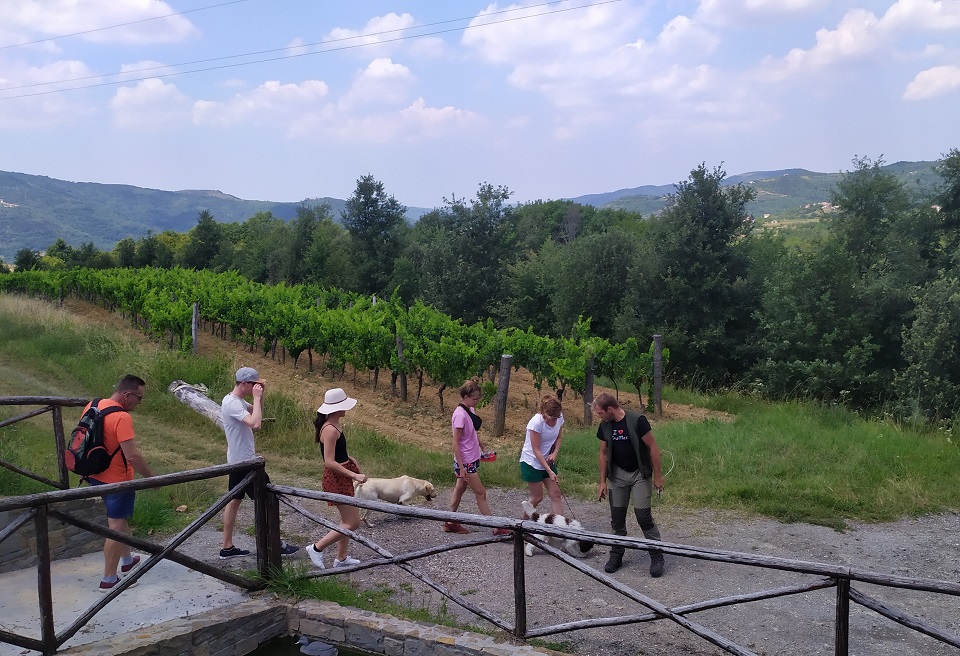
Guided truffle hunting tour in the central Istria
Judging by what I experienced at their property and in the forest, the Karlić family, together with a few more employees, have dedicated their lives to truffles. Ivana is the third generation in the family of truffle hunters. As Ivana points out, the truffle business, from cultivating, hunting, cooking, production, distribution to selling products, is not considered a job at all but a way of life.
"Our team is not big, but it is well-coordinated. We are all like one big family and everyone knows how to do everything. Everyone loves dogs and truffles and it can be seen,“ says Ivana.
Most of the guests are foreign tourists
After spending a day on their property, I realized that the Karlić family members love what they do. Guests, mostly foreign tourists, also recognize it.
"Foreign tourists make up 90 percent of our tourists. For them, our products are affordable, some even say cheap, while for the average Croat our products are expensive, which is clear to me. Truffle hunting justifies our offer in terms of price,“ says Ivana.
An hour at the tasting hall and two more hours truffle hunting were enough to delight me.
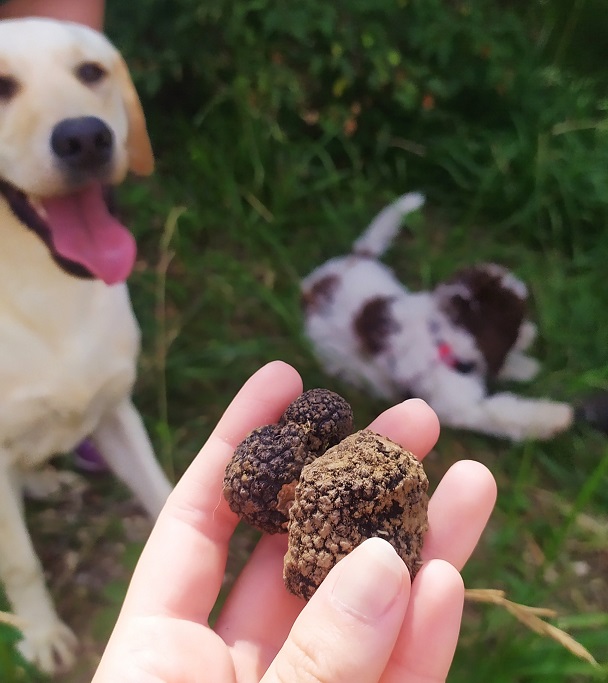
Black truffles, straight out from the ground
"People have great food truffle hunting experience. Some people come back to us every time they come to Croatia. They go on the same tour, eat the same menu, only because they enjoy our hospitality,“ says Ivana.
If someone had told me that my most beautiful experience during the summer would be going to the forest to truffle hunting, I would not have believed him. But Ivana and her team managed to convey their love for truffles to all of us visitors.
What makes Karlić family so unique is their passion and unsurpassed knowledge about truffles.
Truffle products
Last year, the Karlić family, in cooperation with the Aura Distillery, launched the first truffle-flavored gin. It's limited edition and a one-liter bottle costs 100 euros. This gin sold out quickly, and as Ivana Karlić says, the price is so high because of the extreme complexity of its production, as well as the taste. Even critics say their gin is top-notch and deserves that price.
Also, the Karlić family was the first in the world to make a combination of chocolate spread and truffles. It resulted in Trufella, a version of Nutella with truffles, made of white and dark chocolate. It is also possible to taste and buy Truffela while on the truffle hunting tour.
“We also have cheese and sausages. We make such products in cooperation with other small manufacturers. We give them our truffles, they already have their well-known product and then we combine it,“ says Ivana, but adds that the best product is fresh truffles that can be added to any dish. She recommends it with traditional Istrian pasta called fuži.
President Visits Prosciutto, Wine and Truffles Festivals
ZAGREB, October 20, 2018 - President Kolinda Grabar-Kitarović visited on Saturday the 12th International Prosciutto Fair in Tinjan, Istria County, as well as the nearby community of Motovun, where she opened the 9th festival of Teranno wine and truffles.
Zigante Truffle Days Starts in Livade
ZAGREB, September 16, 2018 - Zigante Truffle Days, the world's longest truffle fair, to be taking place over the next ten weekends in Livade, a village in Istria County, opened on Saturday.
Truffles Galore! Istrian Truffle Weekend Festival to Take Place in Buzet
The truffle frenzy in Istria is reaching its peak
Zigante Truffle Days: World's Longest Truffle Festival in Full Swing
The small town of Livade is known worldwide as the centre of the Istrian white truffle
Terrano and Truffles: Festival of Gourmet Delights in Motovun
Quick – name the first gourmet items that come to mind when Istria is mentioned! What did you come up with? Wine? Olive oil? Truffles?
Shrooms are in the Air: Croatian Mushroom Picking for Beginners
Welcome to fungal Croatia! This is not an invite to choose your favourite foot infection but rather an invitation to indulge in the ancient mycophilic tradition of foraging for wild mushrooms in the Fungi Kingdom of Croatia.


